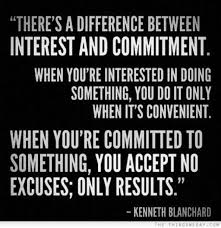A story from long time ago when anger was not my ally. I wish I’d have known how to deal effectively with anger.
It was a teenage party at a public campground. Joking and laughing around a campfire. My best friend, Tim, dropped his empty beer bottle on the ground and stomped on it, breaking it into many tiny pieces.
Something snapped in me and I punched Tim in the chest, knocking him to the ground. Out of my mouth came a litany of profane words about him (as a person) regarding his lack of respect for public property, or any property.
I made the choice to never react like that again. Yet, I’ve had times where something triggered me to do or say things to a fellow human being, much less violent, yet still destructive (mentally and emotionally).
Fess up time.
Ever had something similar happen for you where you reacted with anger toward another person?
These reactions to a trigger event destroy relationships. Unfortunately for many people, they have never learned how to deal effectively with anger. Their angry outbursts become habitual, and it makes it very difficult for them to have a kind, caring, respectful relationship with themselves or with others.

We hear about this from some of our Couples Coaching clients. If anger erupts, it becomes angry attack against angry attack as both attempt to prove their “rightness” and the other’s “wrongness.” In other cases, one person stays small and dishonest, doing anything to avoid their partner’s reaction.
I believe that the feeling of anger is neither right or wrong, good or bad. It is simply a feeling that indicates a deep-seated belief has been threatened. Unconsciously, our existence is at risk.
The awareness of anger can be a powerful ally that you and I can use now to effectively deal with anger each time you feel it. The result will be greater trust in our relationship with self and others.
8-step tool to deal effectively with anger
I invite you to experiment with the tool, and adapt to fit your style.
1. Notice the feelings
Many of us have a challenge with identification of our feelings. Because it’s been hard for me, I’ve written about it a lot.
It is critical for you to notice the feelings in each moment. In simple terms, your feelings are either “on” or “off,” or I call them, “love” or “not-love.”
Your feelings always indicate whether you are being a Creator of your life, or a Victim to life.
Anger is an “off” or “not-love” Victim feeling. Where do you notice it in your body – a tightness, clenching of teeth of fists, or what is it for you? Rather than your usual reaction …
2. Stop and breath
A conscious, deep breath or two, allows the pre-frontal cortex of your brain to kick into gear. It overrides the fight or flight amygdala, which is responsible for your typical angry reaction. In your resourceful mind …
3. Name the feeling
When I first started using this tool, the only feelings I knew were happy, sad, and mad. I’m now aware of a larger range from genuine love to hopelessness. For you, I invite you to name the feeling in your words. This step shifts your mindset from emotionally charged to a logical process where you can …
4. Step back and examine the trigger
Rather than attacking the other person, explore what caused you to feel anger. Typically, the trigger is one that has, and will continue to show up and it may be a memory from long ago. When you can recognize the words, the look, or the action that triggered your anger, you can …
5. Look deeper
What are you trying to protect? What are your fears?
Usually, the underlying belief is something you accepted as true for you at a young age – totally unconsciously. Usually, the belief has no relevance anymore, yet it can rear its head with just a look or a few words from another person. Rather than your old pattern of behaviour, you can …
6. Determine a new choice next time
With the awareness of the feeling, the trigger, and the belief, what are the alternatives to your “typical” way of reacting? What might be the most appropriate response next time?
I invite you to play out each alternative in your mind, as if it were a movie, and determine your best way. Consider it an experiment – something to apply a few times and to evaluate your results.
With a chosen new way, the only way to make it happen is to …
7. Commit

On a scale of 1 to 10, what is your level of commitment (1 meaning it’s not going to happen, 10 meaning total commitment)?
How can you remember to apply your new choice when your trigger has been pulled – every time?
Examples:
Develop a word or phrase you say to yourself. If you do this, keep it simple – only a few words. Use the same exact word(s) every time.
Close your eyes and look up above your eyelids to see a picture that reminds you of what you want to experience.
Touch a specific piece of jewelry you always wear, or a favourite pen you carry, or a small rock in your pocket.
Use a special picture or words on the screensaver of your computer or phone.
What reminder will you use?
After implementing your tool, how are you going to …

8. Celebrate
Dealing effectively with anger is transformational work, not only for you but for everyone around you. How are you going to celebrate your successes?
Circling back to the start, what is your choice now? Will you use anger as your ally or allow it to continue to be a curse. I’d love to have a conversation with you about your new choices and your results. I invite you to email me or call me at 780-785-3700.


